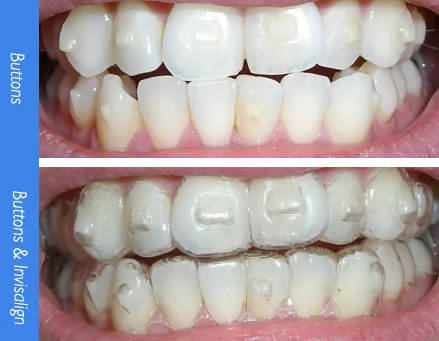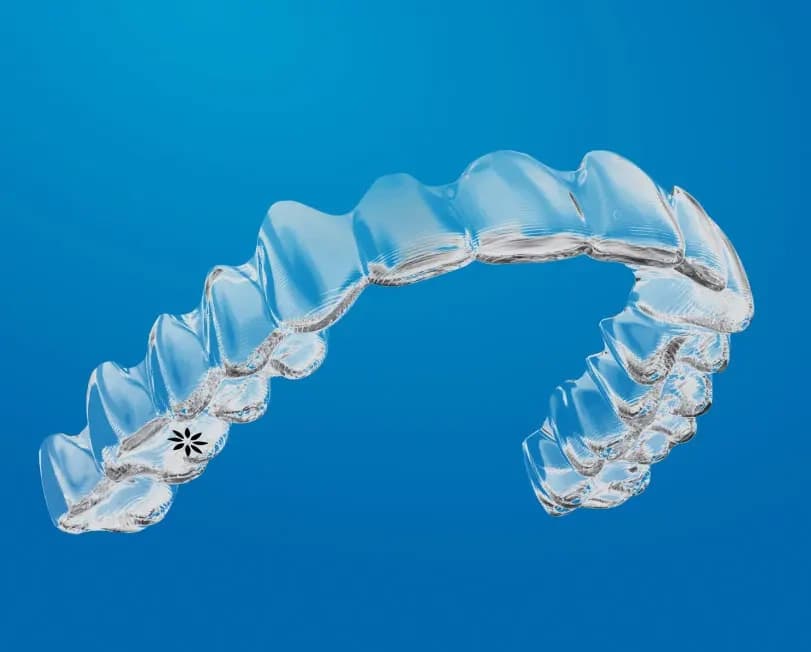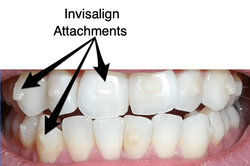Leading Factors to Select Invisalign Over Other Orthodontic Treatments
Wiki Article
Invisalign vs. Standard Dental braces: Which Choice Is Right for You?
When thinking about orthodontic treatment, the selection in between Invisalign and standard braces presents numerous crucial elements that merit mindful examination. Invisalign uses a discreet choice with detachable aligners, while conventional dental braces supply a much more visible yet reliable service for severe imbalance.Summary of Treatment Alternatives

In comparison, conventional dental braces include steel braces and wires that are bound to the teeth. This technique uses continuous pressure gradually to attain alignment. While efficient for complicated orthodontic concerns, traditional braces need routine visits for modifications and can present obstacles in keeping dental hygiene due to the problem of cleaning up about cords and braces.
Both options have their benefits, and the option commonly pivots on details oral problems, way of living preferences, and client compliance. Eventually, getting in touch with an orthodontic professional is vital for establishing the most suitable treatment strategy customized to specific demands. Recognizing the subtleties of each choice can substantially affect the general success of orthodontic therapy.
Aesthetic Considerations
A significant variable affecting the selection between Invisalign and traditional braces is the aesthetic charm each therapy supplies. Invisalign aligners are crafted from clear plastic, making them basically unnoticeable when used.In contrast, typical braces include metal brackets and cords, which can be more visible. While improvements in orthodontic innovation have resulted in the advancement of smaller sized braces and tinted elastics, conventional braces still keep an even more conspicuous account. For some individuals, the visibility of dental braces might hinder them from looking for essential therapy.
Ultimately, the choice between Invisalign and conventional braces might rest on individual choices pertaining to visual appeals. Clients that focus on discernment commonly favor Invisalign, while those that are much less worried about presence might choose for traditional braces. Recognizing the aesthetic effects of each option is crucial for making an educated choice that lines up with one's lifestyle and choices.
Convenience and Convenience

In regards to comfort, Invisalign aligners are detachable, making it possible for patients to enjoy their favored foods without restriction and keep ideal dental health. Brushing and flossing are streamlined, as the aligners can be gotten during these regimens, whereas standard dental braces require careful steering around cords and brackets.
Additionally, Invisalign's progressive system permits for less orthodontic gos to. People normally get numerous sets of aligners at once, which can improve the treatment process and lower time spent in the orthodontist's chair. In contrast, traditional braces necessitate normal adjustments, making them less practical for those with busy schedules. Invisalign. Overall, the comfort and ease of Invisalign make it an attractive option for many individuals looking for orthodontic treatment.
Treatment Period and Efficiency
While both Invisalign and typical braces are efficient in remedying oral misalignments, the duration of therapy can differ dramatically in between both choices. Generally, Invisalign therapy can take anywhere from 12 to 18 months, depending upon the intricacy of the instance. The clear aligners work by slowly shifting teeth into their preferred settings, and regular follow-ups with an orthodontist help make certain development remains on course.
On the other hand, typical dental braces frequently call for a longer commitment, typically varying his response from 18 months to 3 years. This is due to their set nature and making use of wires and braces, which can be extra reliable for complicated instances and extreme misalignments (Invisalign). The treatment performance of traditional braces is well-documented, as they enable exact adjustments and better control over tooth activity
Ultimately, the choice in between Invisalign and standard dental braces might hinge on both the awaited treatment period and the certain dental concerns handy. Consulting with an orthodontist is essential, as they can offer customized referrals based on specific requirements, guaranteeing the selected method straightens with desired outcomes and timeframes.
Cost Comparison and Insurance Policy Alternatives
Expense plays a significant duty in the decision-making process for individuals taking into consideration orthodontic therapy, whether going with Invisalign or traditional dental braces. Typically, the price of Invisalign varieties from $3,000 to $8,000, while traditional dental braces usually cost in between $2,000 and $6,000. Factors affecting these costs consist of the complexity of the situation, the duration of therapy, and geographical location.Lots of oral insurance policy plans offer partial protection for orthodontic therapies, but the specifics can vary commonly. Usually, traditional braces may be a lot more regularly covered by insurance plans compared to Invisalign, which some insurance companies classify as an aesthetic treatment.
Additionally, several orthodontic methods use adaptable settlement plans, making both treatment options more available. Individuals must ask about possible funding alternatives and price cuts for ahead of time settlements. Reviewing the complete price, including insurance advantages and settlement strategies, is essential for making an informed decision that aligns with both aesthetic preferences and budget factors to consider.

Final Thought
In summary, the choice between Invisalign and traditional dental braces pivots on several aspects, including aesthetic preferences, convenience, therapy duration, you could look here and cost. Invisalign offers a very discreet, detachable choice that helps with oral hygiene and nutritional versatility, while conventional braces might be preferable for find complicated dental concerns and usually come with a reduced price point. Eventually, appointment with an orthodontist is necessary to examine individual scenarios and determine one of the most suitable therapy alternative for accomplishing optimum oral positioning.When considering orthodontic therapy, the choice in between Invisalign and standard braces provides several vital elements that warrant cautious evaluation.Contrasting Invisalign and traditional dental braces reveals unique treatment choices for orthodontic correction.While both Invisalign and standard braces are efficient in dealing with dental imbalances, the duration of therapy can differ substantially in between the 2 alternatives.Expense plays a substantial role in the decision-making procedure for people considering orthodontic therapy, whether deciding for Invisalign or conventional dental braces.In recap, the choice between Invisalign and typical braces hinges on several variables, including aesthetic choices, convenience, treatment duration, and expense.
Report this wiki page